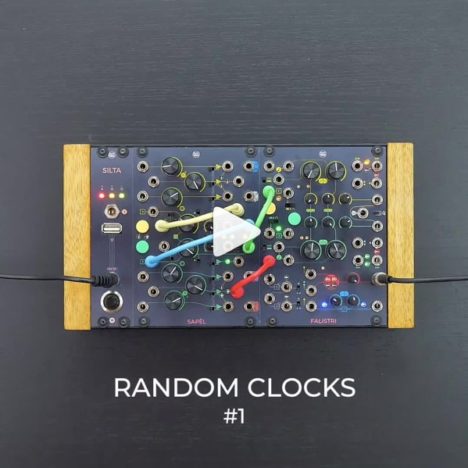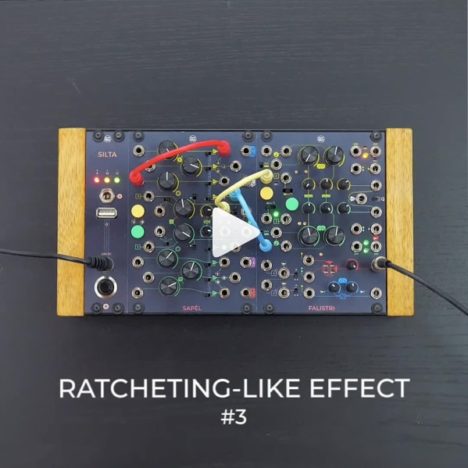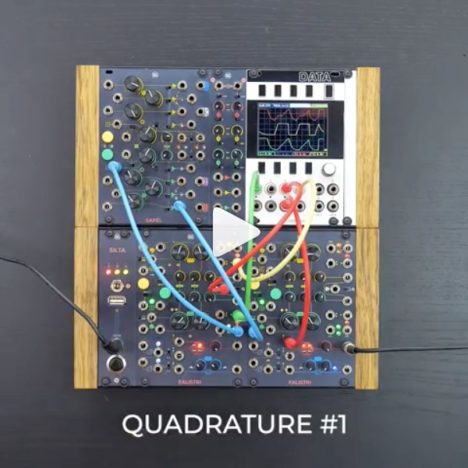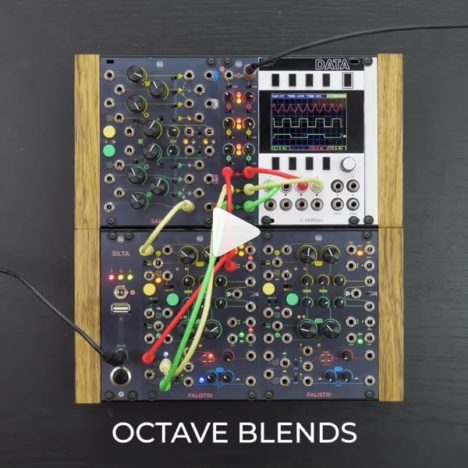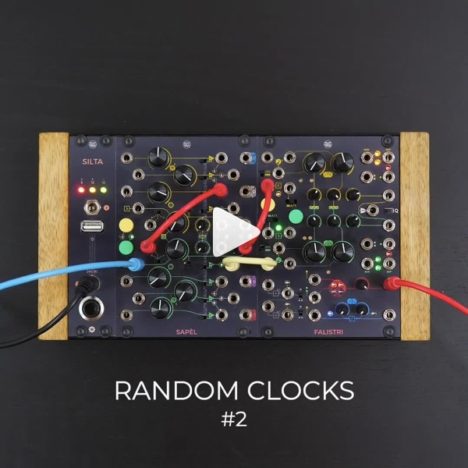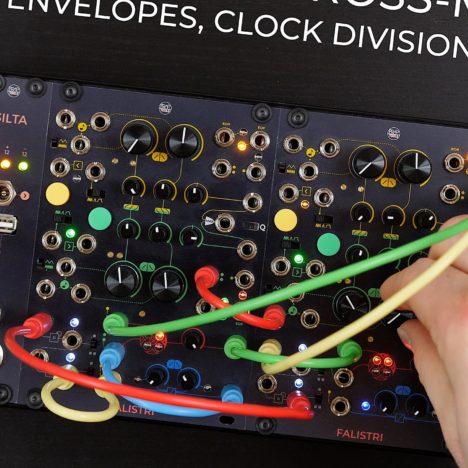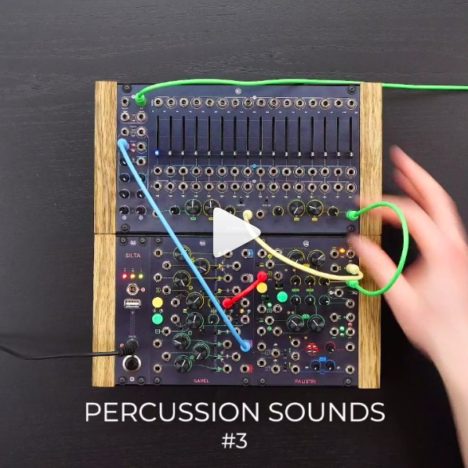- EURORACK
- BAGÀI
- 411
- CUNSA – Sound Seasoning
- CGM – Creative Mixer Series
- BRENSO – Entangled Sound Sources
- USTA – The Voltage Score
- FALISTRI – Movement Manager
- SAPÈL – Tamed Random Source
- FUMANA – Dual 16 Bands Spectral Editor
- 321 – Scale + Flip + Shift + Combine
- 333 – ProAudio Sum & Distribution
- SILTA 2016 – discontinued
- SEI – trunk lines – discontinued
- UNO – foldable case
- PLUS – modular modular case
- ACCESSORIES
- KNOBS
- 500 SERIES
- RESOURCES
- RESELLERS
- ABOUT
- ACCOUNT
Category / techniques
-
Random Clocks #1
Random trigs with some SAPÈL self-patching! In this patch we’ll use the yellow main clock out to control the green one, then we’ll add some cross-patching within the yellow section to achieve some unpredictability.
2019-09-23 -
Ratcheting-Like Effect #3
What about trying some random repetitions? In this patch, a random ratcheting-like effect is obtained by using SAPÈL’s Random Clock to trig the envelope controlling the amplitude, while the clock density (or the ratcheting number) is varied through cross-patching.
2019-09-23 -
Bouncing Ball
In this video, we’ll see how to recreate the classic ‘Bouncing Ball’ patch – using only two FALISTRI!
2019-09-09 -
Quadrature #1
Patch the EOR output into the first frequency divider input, mix all the (bipolar!) outputs into your 321 and fatten up your sound with every possible blend of three octaves!
2019-09-03 -
Octave Blends
Patch the EOR output into the first frequency divider input, mix all the (bipolar!) outputs into your 321 and fatten up your sound with every possible blend of three octaves!
2019-09-03 -
Random Clocks #2
Clock randomness and dummy cables! Normally, the external clock input doesn’t handle fluctuating voltages as trigs. Fear not! You can still use the Gate / CV in to trig your SAPÈL! This works together with the internal clock: if you want total randomness, you can use a dummy cable to block the clock generation and use only the external CV.
2019-09-03 -
FUMANA Feedback #3
What about a FUMANA Feedback AND a spectral transfer – at the same time? In this patch, we’ll use the feedback trick to emphasize the modulation of an oscillator over a pink noise. It works great when vocoding, too!
2019-09-03 -
Industrial Noise and Massive Rhythms
IDEA This industrial groove is created with distorted sounds, metallic noises and massive rhythms coming from the interactions of two Falistri. A cycling envelope is gated by its own division by 16…2019-07-26 -
Percussion Sounds #3
Parametric scanning for creative percussion sounds. In this patch we’ll take advantage of two separate envelope outputs of the same FALISTRI channel to shape a pink noise into some percussive sounds. The key element here is the Parametric Scanning function available in the lower section of the FUMANA filter bank!
2019-07-22 -
Kick Drum #2
Creative kick drum sound with FUMANA’s envelope followers! In this patch we’ll process a low sound from FALISTRI through FUMANA’s filterbank, we’ll use a random trig from SAPEL as modulation source and then feed some of the resulting envelopes back into FALISTRI to modulate the tone.
2019-07-17
Categories
Recent Posts
- CUNSA v/s FUMANA: The same patch on two different filters!
- Subharmonic formant arpeggios patch breakdown: a classic Falistri patch!
- Memes aside, let’s make Sandstorm by Darude on our Frap Tools system
- Four tips to use CUNSA as a sound source (including ringing and additive synthesis)
- ‘Glass sounds‘ analog through-zero FM patch breakdown with Brenso and Cunsa!
